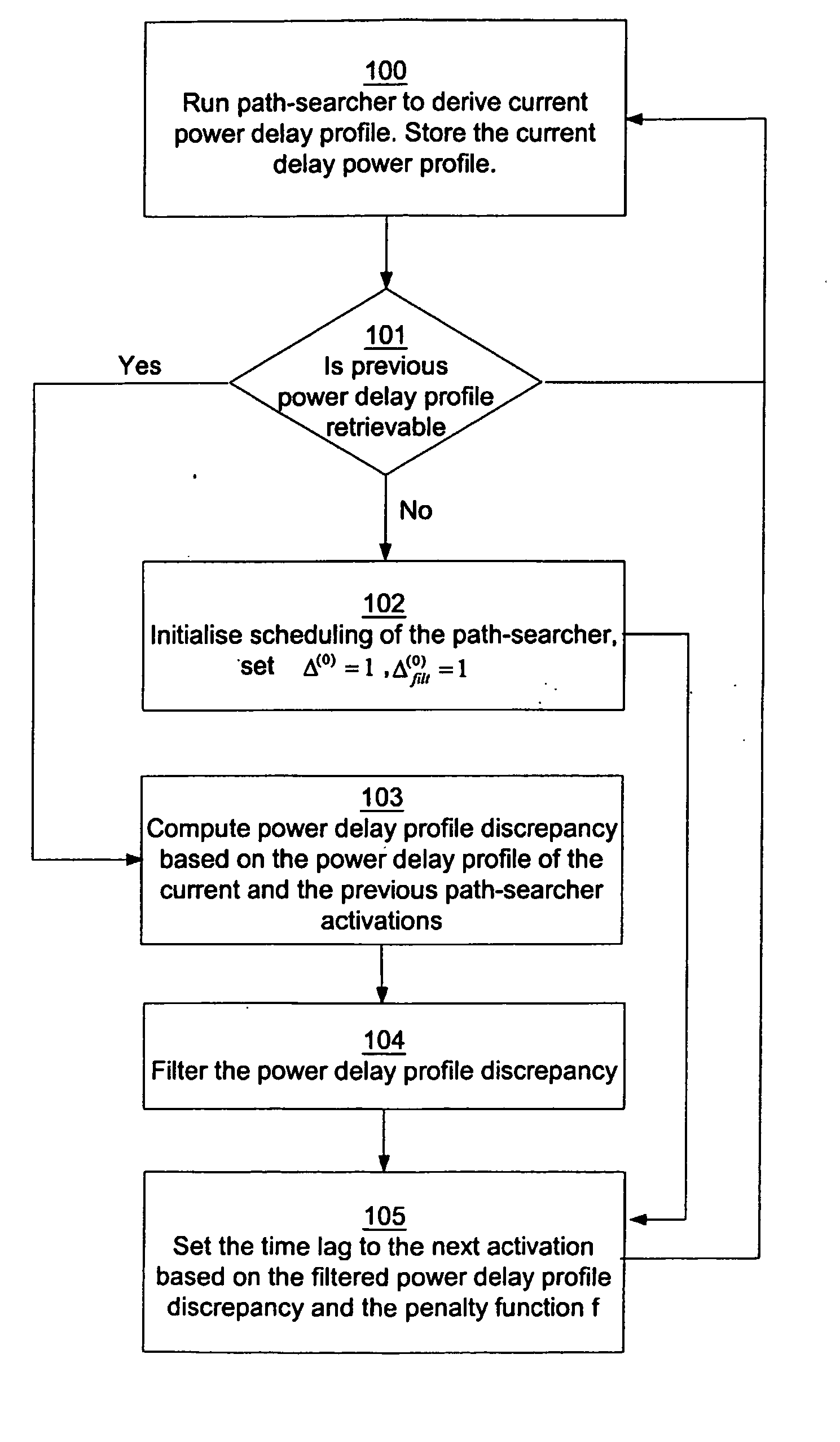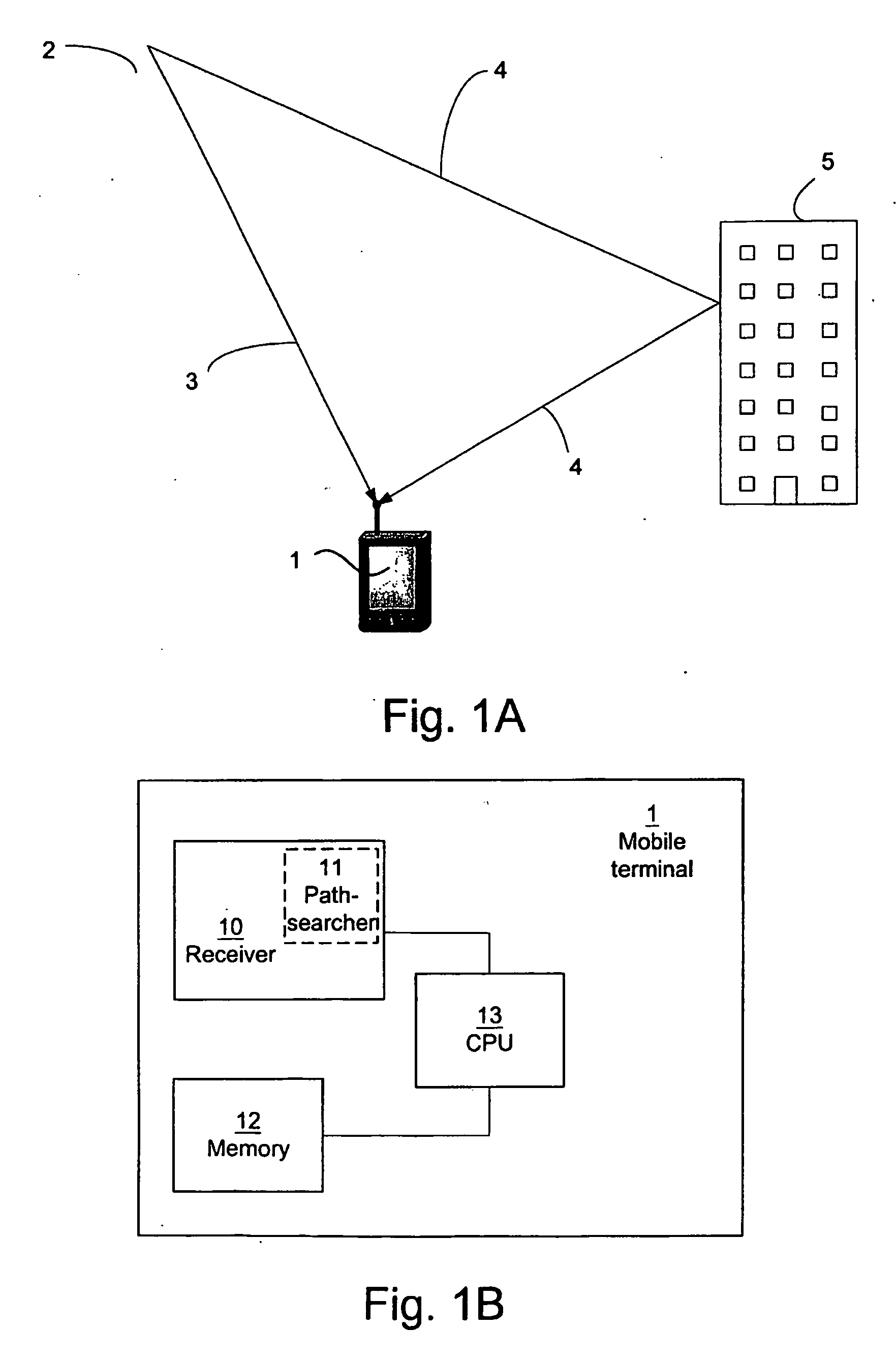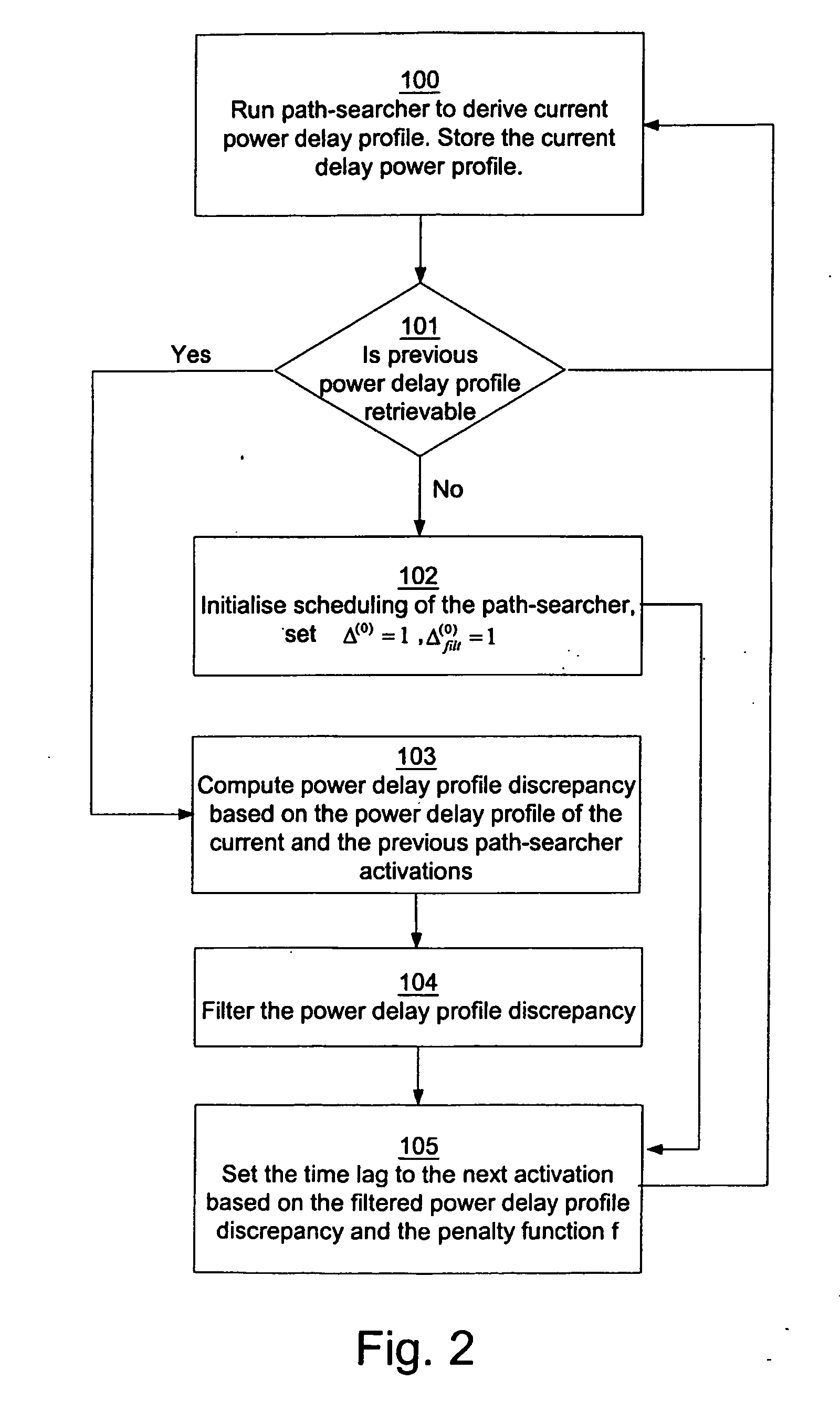Method for path-seacher scheduling
a path-seacher and scheduling technology, applied in diversity/multi-antenna systems, digital transmission, polarisation/directional diversity, etc., can solve problems such as large power consumption, type of interference, and data uncertainty, and achieve the effect of reducing the power consumption of a mobile communication terminal operative and reducing the power consumption of a path-searcher
- Summary
- Abstract
- Description
- Claims
- Application Information
AI Technical Summary
Benefits of technology
Problems solved by technology
Method used
Image
Examples
first embodiment
[0037] In a first embodiment, the current power delay profile is denoted by p(n), where n>=1, and the previous power delay profile p(n−1), each comprising a number of delay powers pi. Consequently, an estimate of the first power delay profile is denoted by p(0). The minimum and maximum time lag to the next path-searcher activation is denoted by τmin and τmax, respectively. Examples of values of these variables are τmin=70 ms and τmax=500 ms. However, the specific values of τmin and τmax may be set differently and have to be thoroughly tested and evaluated in each individual case. τ(n) is the size of the time lag to the next path-searcher activation, which is adaptable as set out above.
[0038] The first embodiment of the scheduling of activation of the path-searcher 11 will now be explained with reference to FIG. 2. In a first step 100, the current power delay profile is derived by the path-searcher 11 of the receiver 10. The current power delay profile is stored in the memory 12 to b...
second embodiment
[0046] A second embodiment will now be described, by which the invention is further improved in that the memory capacity required will be decreased.
[0047] In the second embodiment, only a subset of the powers pi of the derived power delay profile is selected and denoted by {circumflex over (p)}i, j=1, . . . , {circumflex over (N)}p for deriving a reduced power delay profile. In this embodiment, the delay powers are indexed by j and correspond to a particular index i in the first embodiment. The powers of the multi-path signals may e.g. be chosen as the {circumflex over (N)}p paths with the largest powers. Consequently, only the selected powers have to be stored in the memory 12 for the following processing for the scheduling of the path-searcher 11. As in the first embodiment, the selected powers are normalized for processing purposes, i.e.: ∑j=1N^pp^j=1.
[0048] The steps of the method according to the second embodiment will now be described with reference to FIG. 4. Some of the va...
third embodiment
[0067] The penalty function is, as in the previous embodiments, an arbitrary function chosen depending on the specific path-searcher implementation. The function shown in FIG. 3 and explained above is one example of the function f also for the When the time lag τ(n) is computed in step 305, the scheduling is returned to step 300, where the path-searcher is activated with the computed time lag τ(n).
[0068] A fourth embodiment of the method according to the method of the invention will now be described with reference to FIG. 7. In the fourth embodiment; complete or reduced power delay profiles may be utilized. For convenience, this embodiment will be explained with reference to complete current and previous power delay profiles p(n) and p(n−1), respectively, as in the first embodiment. In a first step 401 the path-searcher 11 of the receiver 10 is run to derive the current power delay profile, which is stored in the memory 12 to be used as the previous delay power profile in a subsequ...
PUM
 Login to View More
Login to View More Abstract
Description
Claims
Application Information
 Login to View More
Login to View More - R&D
- Intellectual Property
- Life Sciences
- Materials
- Tech Scout
- Unparalleled Data Quality
- Higher Quality Content
- 60% Fewer Hallucinations
Browse by: Latest US Patents, China's latest patents, Technical Efficacy Thesaurus, Application Domain, Technology Topic, Popular Technical Reports.
© 2025 PatSnap. All rights reserved.Legal|Privacy policy|Modern Slavery Act Transparency Statement|Sitemap|About US| Contact US: help@patsnap.com



